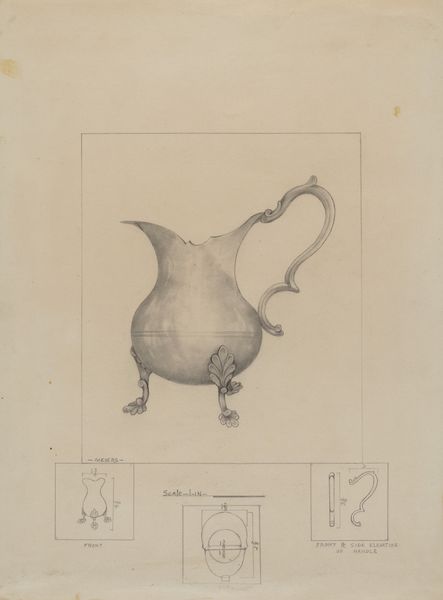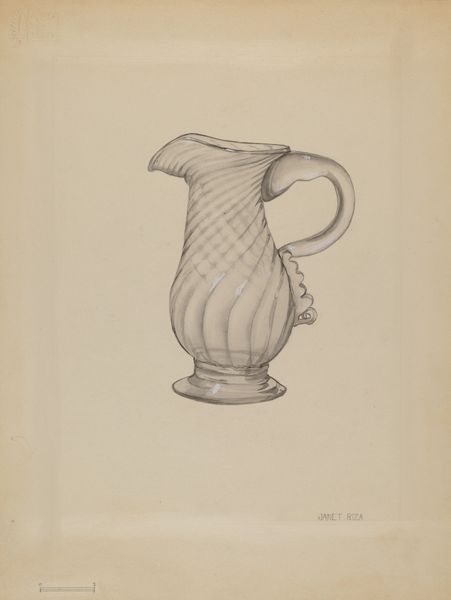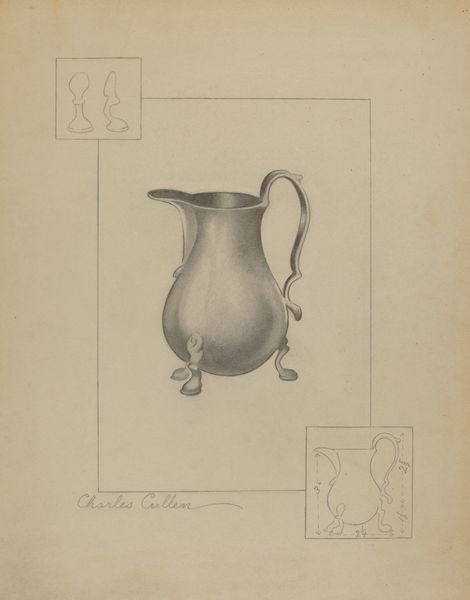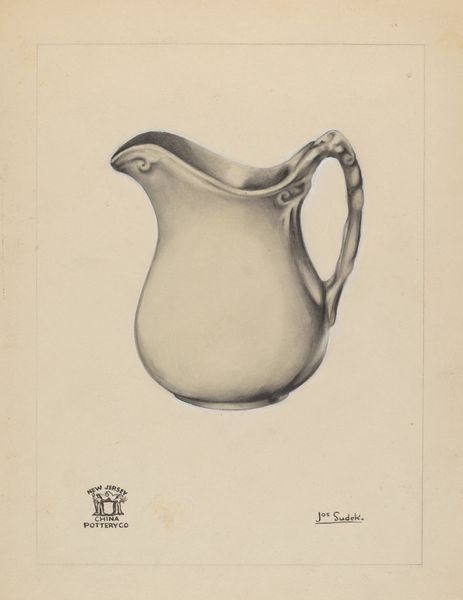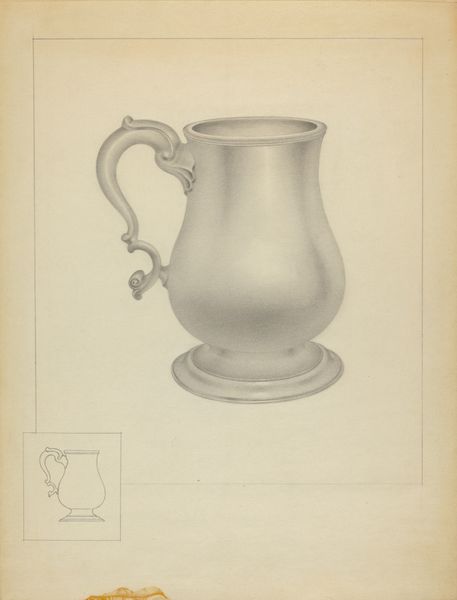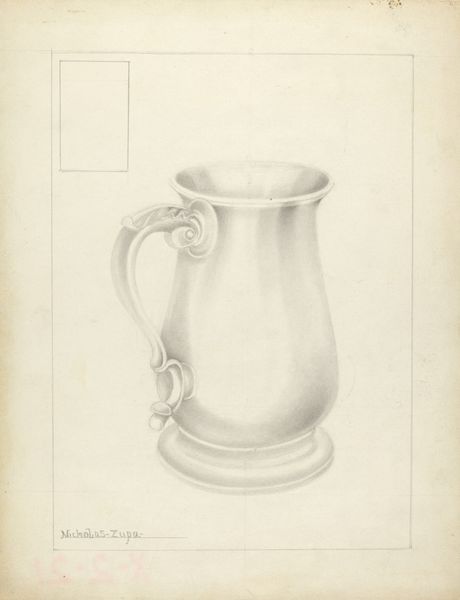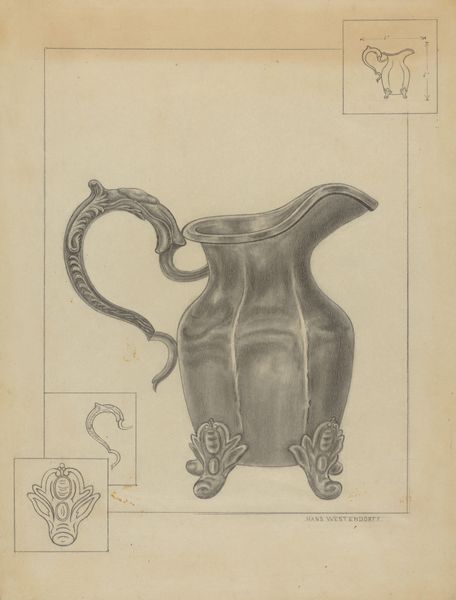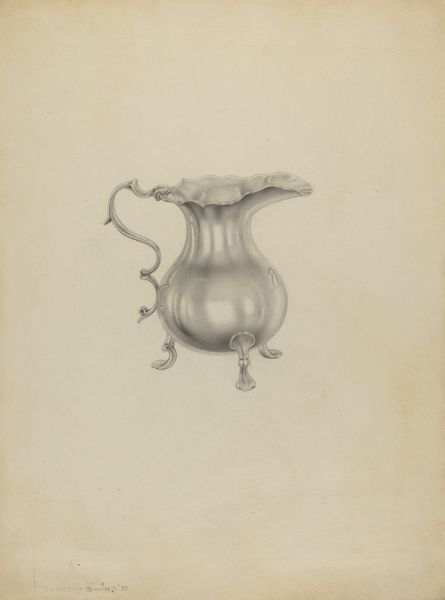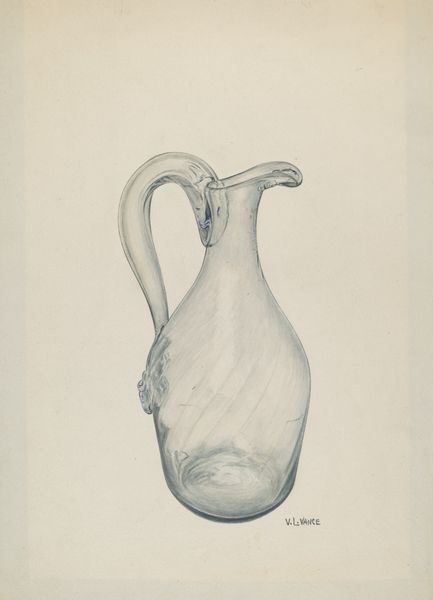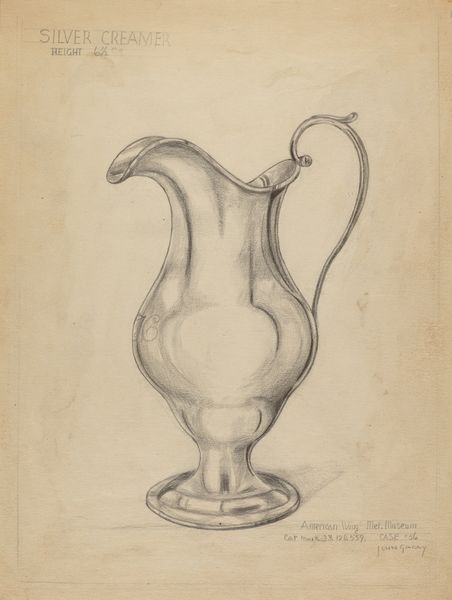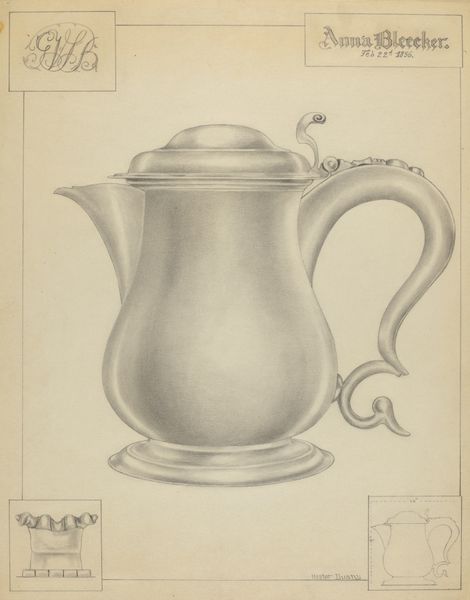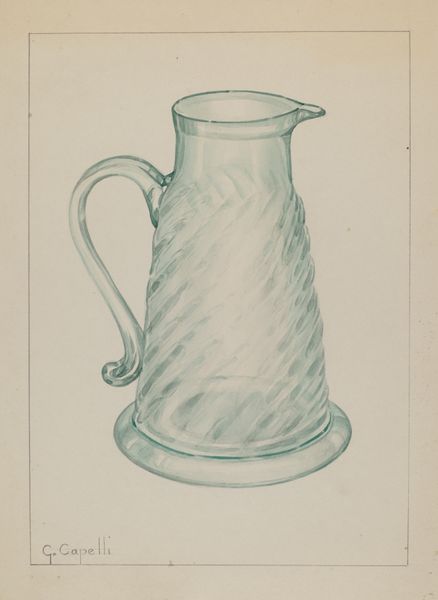
drawing, pencil
#
drawing
#
geometric
#
pencil
#
realism
Dimensions: overall: 30 x 23 cm (11 13/16 x 9 1/16 in.) Original IAD Object: 4" high
Copyright: National Gallery of Art: CC0 1.0
Editor: Here we have Hester Duany's "Silver Creamer," a pencil drawing from around 1936. It's rendered with such care and realism; you can almost feel the coolness of the silver. What stands out to you about this piece? Curator: What strikes me is the very act of drawing such an object during the 1930s. Beyond being a mere still life, this cream pitcher becomes symbolic. Consider the economic hardship of the Depression era – the pursuit of such refined objects, even in rendering, represents access and status, themes tightly woven into societal structures of that time. Who had cream? Who needed a special vessel for it? What does it mean that this object is meticulously represented as part of a social aspiration? Editor: That's fascinating. I was focused on the purely aesthetic aspect, the artist's skill, but I hadn't considered its societal context. How does that connect to today? Curator: Well, think about how we depict aspirational objects today – the cars, clothes, the lifestyles that flood social media. Duany’s drawing invites us to think critically about these portrayals and the inequalities they often mask. Are we simply appreciating the aesthetics, or are we interrogating the underlying messages about who belongs and who's excluded from the cultural ideal? What do we buy into when liking such images? Editor: I see what you mean. It's like this drawing is a mirror, reflecting not just the object, but also the viewer's relationship to the values associated with it. Curator: Exactly. It calls us to reflect on our own participation in these systems of representation and the stories they tell. And to challenge ourselves on what we place on a pedestal, both literally and figuratively. Editor: This really shifts my perspective. Thanks for connecting this drawing to these broader issues. I will think about it next time when scrolling Instagram. Curator: Absolutely. Remember, art always engages in dialogue – not just with itself, but with society. It's in deciphering these conversations that we find a deeper understanding.
Comments
No comments
Be the first to comment and join the conversation on the ultimate creative platform.

